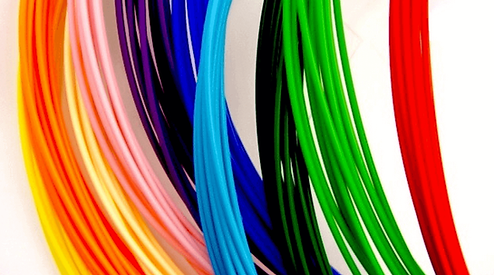
PLA
> Chemical composition and synthesis
The PLA is not a new polymer. We can find researches on PLA as early as 1932. The production of PLA is usually performed by two main routes [2] :
(1) the condensation of lactic acid monomers,
(2) the ring-opening polymerization of the lactide,
both producing water. The two main processes are depicted on the figure below. The lactic acid is obtained by fermentation of dextrose.
PLA presents a density of 1.3 g/cm3. The mechanical properties of the PLA are expressed by its Young Modulus, comprised between 3 and 16 GPa and its tensile strength, 50 MPa. [3]
If the PLA is amorphous, the glass transition temperature Tg determine the using conditions of the polymer in temperature. If it is semicrystalline, the melting point Tm also has to be taken into account. In our case (building a drone), Tg defines the upper temperature for the use of PLA as the body of the drone. PLA presents Tg around 60°C, and a Tm about 150°C, lower than for ABS for example. [1]
> Properties
> As printing material
The printing temperature for PLA filaments are about 180°C to 200°C. PLA has a much lower tendency to warp compared to ABS, for example. So it can be printed with and without a heated print bed. If heated bed is used, it is recommended to set the print bed temperature to approximately 40-50°C.
Blue tape or hairspray is always recommended in order to have a good first layer adhesion. [4]
> Conclusion
Although PLA is a widely used polymer in 3D printing thanks to its hability to be proceeded, the thermal properties of PLA show that it would not be as convenient as ABS for the body of our drone, according that our drone needs to support a temperature of 120 - 180°C. It is the reason why we didn’t choose the PLA polymer to print our drone.
> Bibliography
[1] Polylactic acid, https://en.wikipedia.org/wiki/Polylactic_acid, consulted on 12.03.2017
[2] David E. Henton, Patrick Gruber, Jim Lunt, and Jed Randall, Polylactic Acid Technology
[3] Polylactic acid, http://www.makeitfrom.com/material-properties/Polylactic-Acid-PLA-Polylactide, consulted on 12.03.2017
[4] FormFutura, General Tips & Tricks for printing with PLA filaments, http://www.formfutura.com/formfutura-175mm-premium-pla-sweet-purple.html, accessed on 07.05.2017

Two monomers are used in order to produce PLA : (L)-lactic acid (LLA) and (D)-lactic acid (DLLA), that are two stereoisomers. Commercially produced PLA is a copolymer, obtained by polymerisation of LLA and DLLA, forming PDLLA. Numerous properties of PLA are controlled by the proportion of LLA and DLLA in the polymer. [1]
As an example, depending on the stereopurity of the polymer, the PLA can present a semi-crystalline character, or totally amorphous. This stereopurity is controlled by the reaction environment (catalysts,...). [2]
By Grégoire